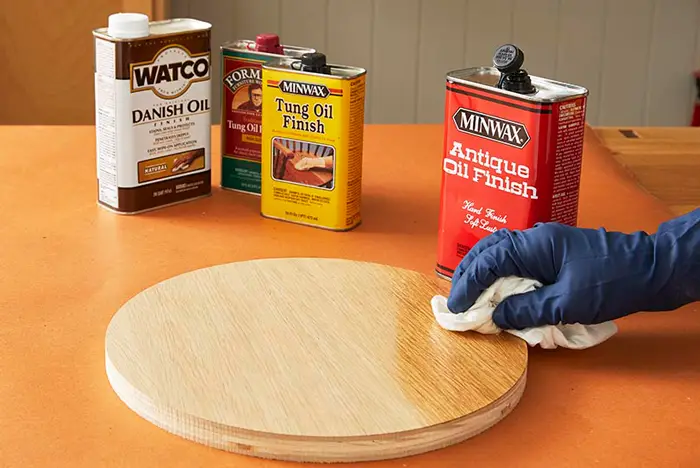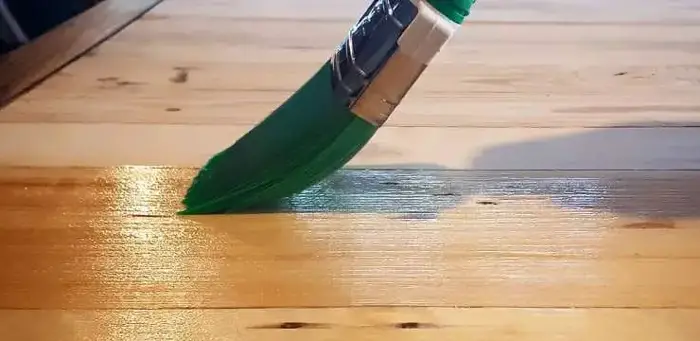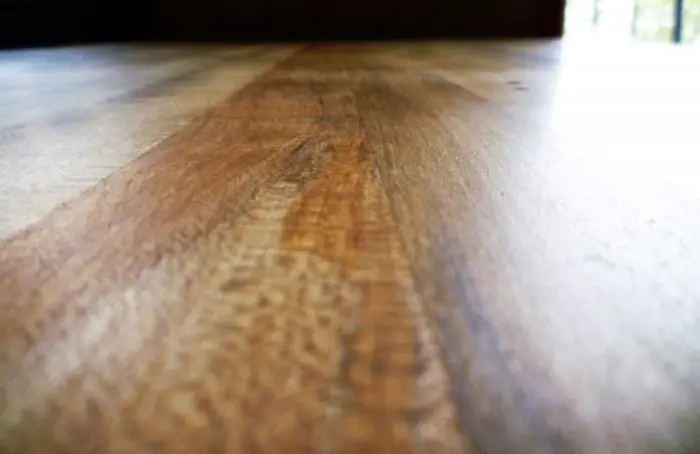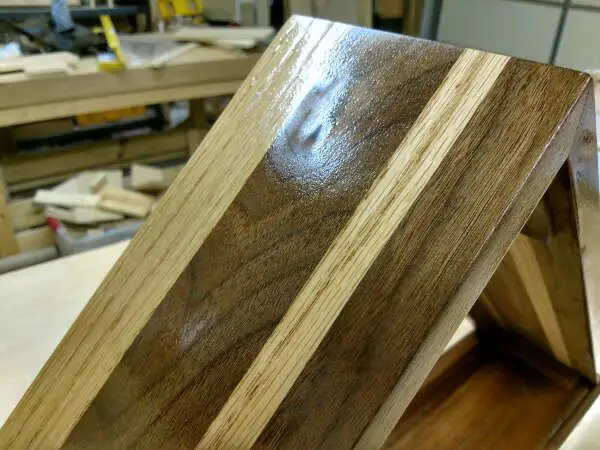Tung Oil vs Danish Oil- A Brief Face-Off
Tung Oil vs Danish Oil has always been a good debate. It’s tough to choose when you get the best from both because they have some unique characteristics for your woodworking projects.
So, what’s the difference between tung oil and Danish oil? Tung oil is derived from the seeds of the tung tree. You get a more natural and robust protective layer. Danish oil, on the other hand, is a blend of varnish and oils. This is your go-to product if you want a smoother, quicker application with a richer, satin-like finish.
Now, regardless of this information, you need to understand the attributes of each oil type and which one you should choose over which. And that’s what we’re going to break down today. Keep digging.
Tung Oil Vs Danish Oil- Comparison Chart

If you don’t have much time to read the differences, you might want to take a quick look at the comparison chart for a brief idea.
| Tung Oil | Danish Oil | |
|---|---|---|
| Source | Extracted from the seeds of the tung tree | Blend of varnish and drying oils |
| Natural or Not | 100% natural oil | The blend contains synthetic components |
| Application Process | Requires more coats for full protection | Fewer coats are needed for a protective layer |
| Drying time | Slower drying time | Faster drying time |
| Finish | Offers a natural, matte finish | Provides a smooth, satin-like sheen |
| Durability | Exceptional long-term durability | Moderate durability |
| Maintenance | Requires periodic reapplication | May need regular upkeep |
| Odor | Has a distinctive nutty scent | Has a milder, less pungent odor |
| Environment Considerations | Eco-friendly and biodegradable | May contain VOCs, less eco-friendly |
Tung Oil Vs Danish Oil- The Differences
Let’s get to know about the major differences between Tung Oil and Danish oil in detail.

Waterproofing
Tung oil outperforms Danish oil with its amazing water-resistant capabilities. When properly applying tung oil to wood, it penetrates deeply, creating a robust, water-resistant barrier. The oil fills the pores and grain of the wood like a pro. This makes the wood less prone to water absorption and swelling.
However, Danish oil isn’t completely poor either, but the protection quality doesn’t hit the mark.
Durability
Tung Oil takes the spotlight here as well. As we said earlier, it penetrates deep. As a result, you get to experience highly resilient woodwork here. Say ‘pfft’ to daily wear and tear without batting an eye. If you want to go for long-term woodworking projects, it’s your best bet.
As for Danish oil, the durability is quite decent. We wouldn’t say it’s bad. But its protection may not match the exceptional long-term durability you get from tung oil.

Curing Time
Tung oil might penetrate deeper, but Danish oil penetrates faster (not necessarily it has to go deeper to be faster). And this is where Danish Oil takes the lead. Thanks to its blend of oils and varnish, it takes 24 to 48 hours to cure.
On the other hand, Tung Oil requires a bit more patience. You’re getting thicker consistency; true. But the time it takes to cure can last 7 to 10 days for a minimum cure. You might even have to wait 15 to 30 days for the full cure. Such a bummer!
Appearance
Tung Oil provides a more natural, matte appearance that accentuates the wood’s natural grain and character. It enhances the wood’s depth and gives it a warm, earthy feel. The finish is not overly shiny. If you want an organic, rustic vibe, go for tung oil.

Danish Oil offers a smooth, satin-like sheen. It brings out the wood’s color and provides a slightly glossier finish compared to Tung Oil. Danish Oil’s appearance is more refined and contemporary. It’s for those who want to showcase the wood’s beauty with a touch of elegance.
Odor
If you apply Tung Oil, you’ll get this unique, nutty and earthy scent. Some people find this aroma pleasing. However, others may find it somewhat strong during the application process. But then again as the oil cures, the odor tends to mellow out over time, leaving a more subtle scent.
On the contrary, Danish Oil generally presents a milder and less pungent odor. Due to its blend of oils and varnish, the smell is typically less pronounced than pure Tung Oil. This quality makes Danish Oil a preferred choice for those who are sensitive to strong scents.
Environment Considerations
Tung Oil is a more eco-friendly option. Since you get it directly from the seeds of the tung tree, it’s a 100% natural and biodegradable product. The lack of harmful chemicals or synthetic components makes it a sustainable choice for wood finishing.
Danish Oil may not be as environmentally friendly as Tung Oil. It often contains a blend of oils and varnish. Some of these formulations may include volatile organic compounds (VOCs). These VOCs can contribute to indoor air pollution and have adverse effects on the environment.
Things To Remember While Using Tung Oil

If you want to use tung oil, keep a few things in mind to get the best out of using this oil type.
- Surface Preparation: Before you start the application process, make sure the wood surface is clean, dry and free from dust and contaminants. Proper surface preparation ensures better adhesion and a smoother finish.
- Thin Coats: Go for thin coats rather than thick layers. This allows for better penetration into the wood and helps prevent the finish from being sticky or blotchy.
- Sand Between Coats: Gently sand the wood surface between each coat of Tung Oil using fine-grit sandpaper. This will smooth out any imperfections and promote good adhesion for subsequent coats.
- Apply in a Warm, Well-Ventilated Area: Tung Oil cures better in a warm environment with good airflow. Make arrangements for proper ventilation during the application and curing process.
- Allow Sufficient Curing Time: Be patient and allow ample time for each coat of Tung Oil to cure properly. This can take several days to weeks, depending on environmental conditions.
- Buff for a Smooth Finish: Consider buffing the surface gently after the final coat has cured. You’ll find a soft cloth pretty handy to achieve a smoother, satin-like finish.
- Avoid Excessive Sunlight Exposure: While Tung Oil offers UV resistance, minimizing prolonged exposure to direct sunlight is best. Too much exposure can still cause color changes over time.
- Reapply as Needed: Periodically reapply Tung Oil to maintain the wood’s protection and appearance.
- Use Appropriate Tools: Brushes, cloths, or foam applicators work well for applying Tung Oil. Choose the tool that suits your project and ensures even application.
- Dispose of Waste Properly: Dispose of any used rags or applicators properly to prevent spontaneous combustion. Lay them flat to dry outside, away from any combustible materials.
Things To Remember While Using Danish Oil

While using Danish oil, there are a few dos and don’ts you should take into account.
- Prep the Wood: Make sure the wood surface is clean, dry, and free from any previous finishes, dirt, or debris before applying Danish Oil.
- Test in a Hidden Area: Before applying Danish Oil to the entire surface, perform a test in a discreet or hidden area of the wood. Since Danish oil is made of chemicals, you must ensure the wood you’re working on is compatible with the oil.
- Stir Well: As mentioned earlier, Danish Oil is a blend of various oils and varnishes. These components can get separated from each other over time or during storage. So, stirring the product thoroughly before application is crucial to ensure consistent results.
- Use a Lint-Free Cloth: Apply Danish Oil with a lint-free cloth, following the wood’s grain for an even and smooth finish. Avoid using foam brushes, as they may create bubbles or streaks.
- Wipe Off Excess: After applying Danish Oil, make sure to wipe off any excess oil with a clean cloth. Leaving excess oil on the surface may result in a tacky or sticky finish.
- Sand Between Coats: For a smoother finish, lightly sand the surface between coats of Danish Oil using fine-grit sandpaper. This helps to remove any imperfections and ensures proper adhesion.
- Allow Adequate Drying Time: Danish Oil typically dries faster than other finishes, but still, allow each coat to dry completely before applying subsequent coats. Follow the manufacturer’s instructions for recommended drying times.
- Apply Multiple Coats: For enhanced protection and depth of color, consider applying multiple thin coats of Danish Oil rather than a single heavy coat.
- Buff for a Glossier Finish: If you desire a glossier appearance, buff the surface gently with a clean cloth after the final coat has dried.
- Dispose of Rags Properly: Due to the risk of spontaneous combustion, properly dispose of any used rags or applicators. You can lay them flat to dry outside, away from any flammable materials.
Wrapping Up!
In the ultimate face-off, Tung Oil Vs Danish Oil have shown their distinctive characteristics and advantages. Each oil offers its unique set of benefits, catering to different preferences and project requirements.
Tung oil basically focuses on enhancing the wood’s durability and depth. Thus, for most woodworkers, tung oil is the best bet. Nevertheless, both oils are favorite choices among woodworkers and DIY enthusiasts. You just choose wisely, and let your woodworking journey be one of beauty and durability.





